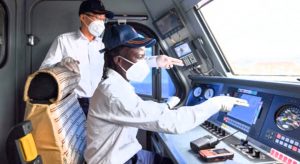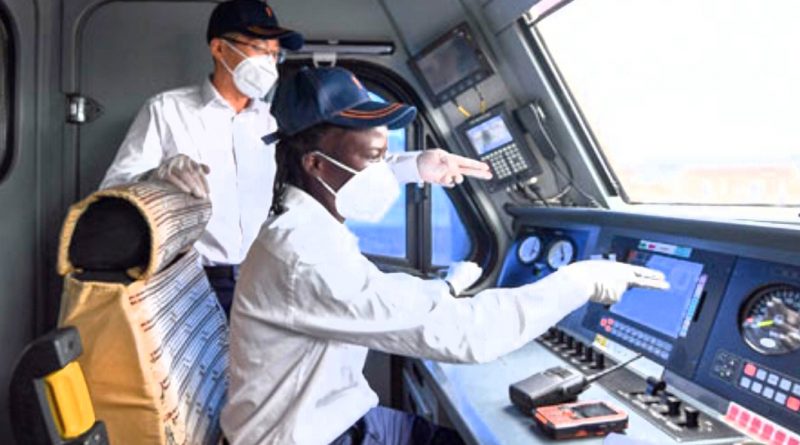ON THE RIGHT TRACK: One of Kenya’s first female train drivers benefits from the construction of the Mombasa-Nairobi Standard Gauge Railway and Chinese know-how
Li Xiaoyu
Concilia Owire, 28, grew up in a small village in west Kenya. Weighed down by cultural traditions and financial constraints, girls of her generation have often abandoned their career aspirations. But the opening of the Mombasa-Nairobi Standard Gauge Railway (SGR), built with Chinese support, has changed all that.
This is the country’s first modern railway, connecting the port city of Mombasa in the east with Nairobi, the capital, in the west, since independence in 1963. “Today, we celebrate one of the main milestones in Kenya’s development into an industrialized, prosperous middle-income country,” Kenyan President Uhuru Kenyatta declared during the opening event on May 31, 2017. He referred to Kenya’s first seven train drivers, including Owire, as “national prides.”
Owire joined the Africa Star Railway Operation Co. (Afristar), the Chinese operator of the SGR, in 2016, after receiving her electrical engineering degree. In early 2017, the company sent her and six other young Kenyan women to China for 50 days of training at Baoji Railway Technician College in Shaanxi Province, following a tough selection procedure. The program enhanced her understanding of railway operations and maintenance.
Owire has continued her career development momentum in Kenya. Yang Ming, her Chinese mentor, is presently teaching her regular operation, repair, and maintenance methods. He moved to Nairobi in March 2018 to take over the administration and training of Afristar trainees after decades of experience as a railway operations manager.

Yang ensures that Owire inspects the train along the tracks, analyzes the dashboard, and repeats all of the directions for train movement before each departure. “These young female train drivers represent the Kenyan railway industry’s future, therefore we can’t leave anything to chance,” he added.
“Yang is tough on us, but he is also very patient. I can see the Chinese people’s endurance, meticulousness, and generosity in him,” Owire said.
In addition to the rapid development of her professional skills, the young Kenyan has also passed HSK 4, the intermediate level of the Chinese language proficiency test. Owire has also been promoted to the position of driver-guide, making her responsible for training newly hired drivers.
For the past five years, the Mombasa-Nairobi SGR has been operating safely. It has reduced the travel time between the two major cities from 10 to five hours, resulting in a 40-percent reduction in logistics expenses. Owire believes that the railway is vital to his country’s mobility, connectivity and trade revolution, and that it would boost East African regional integration.
Data from the Kenya National Bureau of Statistics show that the SGR line carried an estimated 1.99 million passengers in 2021, exceeding pre-pandemic levels. Rail freight volumes increased as well, with a total of 5.4 million tons of cargo moving across the network, up from 4.4 million tons in 2020.
“I still have a lot to learn from my trainer. I believe that the Kenyan railway network will continue to develop. It will become more and more efficient like its Chinese counterpart,” Owire said with confidence.
This article was first published in ChinAfrica magazine
Source: Diplomatic Society




